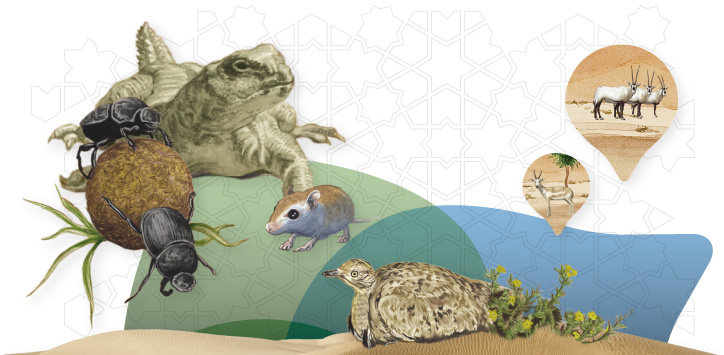
You are in :
Sand Sheets & Sand Dunes

Sand Sheets & Sand Dunes
Sand sheets and dunes of various types cover most of the Emirate. Sand sheets are low relief features, largely devoid of dunes, whereas dunes are distinct and sometimes complex landforms at least several metres high. Where dunes merge, vast 'sand seas' are formed. The unstable sands of mobile dunes make them less amenable to plants. The dune substrates are composed almost entirely of coarse-grained sand, allowing rapid penetration of water to depths where it is inaccessible to many desert plants, while few specialised species can cope with the constantly changing surface conditions of mobile sandy substrates. Seeds that are buried too deep are unable to germinate, and those that do must be resistant at the highly vulnerable seedling stage to conditions such as lack of water, abrasion from wind-blown sand and frequent burial and/or removal of the sand around them. Consequently, mobile sands are sparsely vegetated, mainly by perennials.
Just Below the Surface
Related video
The Return of the Arabian Oryx
Learn about the Arabian Oryx, the graceful white antelope so celebrated in Arab art and literature.

















